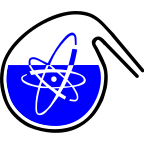Speaker
Description
N-donor and O-donor ligands form strong, ninefold coordinated complexes with trivalent actinide and lanthanide ions. These excellent coordination properties make them suitable for the application as extractants and are interesting systems to study from a fundamental scientific perspective. Extraction studies have shown that N-donor ligands (e.g. nPr-BTP) are suitable for the selective separation of An(III) from Ln(III). The selectivity stems from a different metal-ligand interaction and thus leads to significant differences in complex stability between the Ln(III) and An(III) complexes. In O-donor complexes (e.g. TODGA), stability constants and extraction properties are quite similar. In conclusion, the An(III)-O and Ln(III)-O binding properties are expected to be equivalent.
Considering this, the question arises how the metal-ligand interaction changes if structural features of N- and O-donor ligands are combined. For that reason, we present a spectroscopic study of the complexation of Ln(III) and Am(III) with the N,O-donor ligand N,N,N',N'-tetraethyl-2,6-carboxamidopyridine (Et- Pic). By using
Acknowledgements: This work has received funding from the German Federal Ministry for Research and Education (grant agreement No. 02NUK059A, 02NUK059C).

